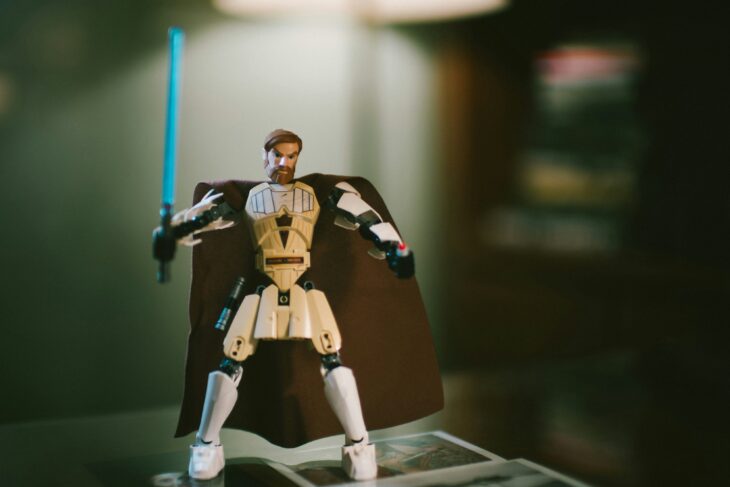If you’re a Star Wars fan, you’ve likely heard legendary tales regaled about Obi-Wan Kenobi, the wise Jedi who guided Luke Skywalker and shaped events that changed the galaxy. But how did he become such a pivotal figure, and why does everyone speak of him with equal parts awe and affection? Let’s explore his journey to see how he truly transformed the Star Wars universe.
Meet Obi-Wan Kenobi
Have you ever wondered who first showed Luke the potential of the Force? Enter Obi-Wan Kenobi. Created by George Lucas as a mentor figure, this legendary Jedi was portrayed by Alec Guinness in the original trilogy and by Ewan McGregor in the prequel films and the 2022 television series (Wikipedia). You meet him in A New Hope as an older recluse on Tatooine, but hints of his vast experience quickly surface. Beneath his calm exterior lies a battle-tested warrior who survived galactic conflicts, faced powerful Sith Lords, and refused to give up on hope.
Trace His Path To Mastery
Early Padawan Days
Before he became a mentor, Obi-Wan was just like any Jedi-in-training, learning to wield a lightsaber and trust the Force. He served as Padawan under the maverick Jedi Qui-Gon Jinn and quickly discovered the high stakes of galactic affairs. When Qui-Gon encountered a young Anakin Skywalker, who was believed to be the “Chosen One,” Obi-Wan’s life took a life-changing turn. He lost his mentor in an epic duel against Darth Maul, then vowed to continue Qui-Gon’s mission.
Becoming A Mentor
Stepping up, Obi-Wan Kenobi trained Anakin and navigated the chaos of the Clone Wars as a leading general. Dubbed “the Negotiator,” he played a key role in conflicts across countless star systems. His leadership kept the Jedi Order intact for as long as possible. Eventually, Obi-Wan took it upon himself to watch over Anakin’s son, Luke, on Tatooine. By the time you see him in Star Wars Episode IV, he’s the calm teacher who guides Luke toward his destiny.
See His Global Influence
Curious how one Jedi could alter the fate of an entire franchise? Obi-Wan’s mentorship gave Luke the confidence to confront the Empire, thus propelling the Rebels to victory. He also remained a guiding presence beyond death, using the Force to assist Luke in some of his darkest moments. And it wasn’t just the original trilogy that showcased his power. Ewan McGregor’s portrayal in the prequel films, including The Phantom Menace (1999), earned a Saturn Award nomination for Best Actor (Wikipedia), proving how enthralling this character’s evolution has been for fans.
Check Out Fascinating Details
Obi-Wan Kenobi’s story goes much deeper than a typical mentor archetype:
- He was nicknamed “the Negotiator” for his diplomatic style during the Clone Wars.
- Despite training Anakin, then watching him turn into Darth Vader, he never abandoned belief in Anakin’s potential for good.
- He defeated General Grievous in the Battle of Utapau and eventually faced Vader in a dramatic showdown on the first Death Star.
- After sacrificing himself, he continued guiding Luke as part of the Force, demonstrating his unwavering commitment to the Jedi path.
- He even ranks among the most celebrated movie heroes of all time, showing that humble wisdom often resonates louder than brute strength.
If you want to explore more iconic characters, check out our collection of major character profiles from the Star Wars movies. You’ll find plenty of intriguing backstories and more connections to the epic saga.
Whether you’ve enjoyed Obi-Wan’s wise teachings in A New Hope or thrilled over his athletic lightsaber duels in the prequels, there’s no denying the impact he’s made. He was the bridge that linked the old Jedi traditions with a new generation of heroes, and he continues to inspire fans to trust the Force and stand up for what’s right.
Next time you watch a Star Wars film, keep an eye on the legacy Obi-Wan Kenobi left behind. You’ll see how his courage, wisdom, and unwavering optimism echo through the entire saga. May the Force be with you as you discover even more about this legendary Jedi Master.





